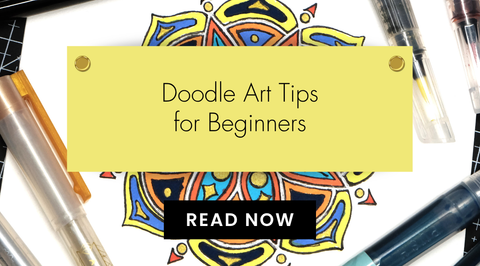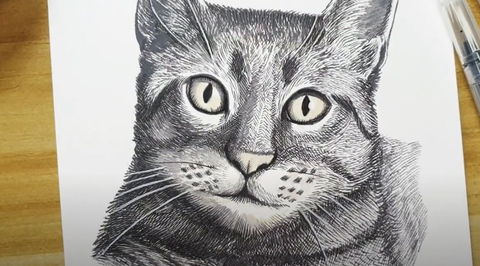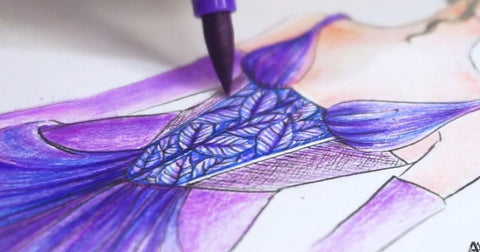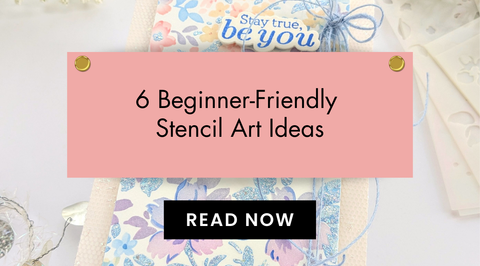The Best Tools for Creating Impasto Effects in Paint
Last Updated: October 13, 2025
"I dream of painting, and then I paint my dream." - Vincent Van Gogh.
In the diverse world of painting, exploring various skills is vital for finding your artistic voice. Today, we dive into the captivating realm of impasto - a must-try technique for acrylic and oil painters. Discover the definition of impasto, making your first impasto art, and what materials are best for achieving impasto effects in your projects!

Artists' Gouache Set - Strolling Through New York
So whether you're a beginner or a pro, this blog will help you explore the art of enhancing the texture and depth of your projects with Impasto. So grab your palette, and let's go!
What Is the Definition of ”Impasto” in Art?
Impasto comes from the Italian word "paste" or "mixture." It is a painting technique that involves thickly layering paint and colors to create texture and depth on canvas. Because paint is slathered heavily, it makes a three-dimensional effect that, when dried, pops up some aspects of the painting.

Starry Night by Vincent Van Gogh
Most artists often use impasto to add tactile qualities to their artwork, emphasizing the brushstrokes and creating a sense of physical presence. The technique is commonly associated with oil painting, but you can also do it with acrylics and other mediums, such as gouache. Impasto allows you to create expressive and dynamic surfaces that engage the viewer's senses and add layers of visual interest to your artwork. From creating realistic skin wrinkles for portraits to mimicking the broken effects of light hitting objects, impasto can be used in a variety of ways to enhance your artwork.
The most famous artists who largely use Impasto in their art are Vincent van Gogh, Jackson Pollock, Claude Monet, Rembrandt van Rijn, and Diego Velázquez, among others.

Shimmering Substance by Jackson Pollock
How Do You Do the Impasto Technique?
To start implementing the impasto technique on your projects, you need to apply thick layers of paint onto the surface of an artwork. Using tools like palette knives or brushes with firm bristles, you can create texture and depth through bold, visible brushstrokes.
You can build up layers by using heavy-bodied paints such as oil or acrylic, allowing each one to dry before adding more. You can achieve this type of heavy painting by mixing your paints with impasto mediums or thickening agents to enhance their viscosity and create a sculptural quality.

Watercolor Palette - Medium
Through the deliberate manipulation of impasto paint, you can bring your work to life, engage your viewer's senses and add a dynamic, three-dimensional element to your artwork.
What Are the Materials You Need to Achieve Impasto?
In impasto art, the most important element that creates its distinct effect does not merely lie in execution, but in the materials you use to create the strokes. It is one of those painting techniques whose potential is limited only by the quality of the tools that you utilize. To encapsulate the magic of impasto effects on your artwork, you need to have the following art supplies:
1. Heavy-Bodied Paints
When creating impasto art, you need to opt for oil or acrylic paints, as they work best for impasto techniques. Mediums such as gouache paint are also acceptable. You need to select thick, heavy-bodied paints that retain their texture when applied. This will make it easier for you to build up layers, mold shapes, and imprint rough strokes.

Reflection by Lucian Freud
While you can try using watercolor paints for impasto, this will give you a very limited effect and can only be done by layering, dry brushing, and lifting, together with the use of less water and more pigment.
2. Palette Knives and Bristle Brushes
Of course, one of the most important art supplies you'll need for Impasto painting is palette knives. Palette knives are particularly useful for applying thick layers of paint and creating distinct textures. They have a flat, flexible metal blade that allows you to apply paint with precision and control.
With a palette knife, you can scoop up generous amounts of paint and apply it directly onto the canvas, resulting in thick, textured strokes. The shape and size of the palette knife blade can also influence the type of texture you create. You can experiment with different knife shapes, such as straight-edged, trowel-shaped, or notched, to achieve various effects. You can also vary your impasto effects by adjusting your angles and the directions in which you apply and layer paint.

Papers & Surfaces
On the other hand, bristle brushes are also a useful tool for creating impasto effects. These are brushes with stiff, straight and hard bristles, commonly made from synthetic or animal hair such as wild hog. They hold a lot of paint and help you manipulate textures through deliberate strokes. Using these brushes, you can vary the pressure and direction of your brushstrokes to create different textures, such as subtle ridges to bold peaks.
3. Texture Gels and Impasto Mediums
Texture mediums are dense gels that are mixed with paint to make it thicker and stiffer in consistency. They can be opaque or translucent, depending on the specific gel type. Some gels may dry with a glossy or matte finish, which can further enhance the overall appearance of the painting.
They also come in a range of consistencies, from soft gels to heavy gels. Soft gels have a smoother texture and are ideal for adding subtle texture, while heavy gels have a thicker consistency and can create a more pronounced texture. There are also specialized texture gels available, such as molding paste, crackle paste, or coarse pumice gel, each offering unique textural qualities for your artwork.

Using texture gels allows you to create a more fantastic surface texture on your Impasto art, making it essential for retaining the shape of paint and brush patterns easier on your canvas.
4. Sponges and Texturing Tools
Besides your palette, knives and brushes, sponges, and other tools, such as found objects, can help you create unique and varied impasto textures. Sponges, for example, whether natural or synthetic, can help you add one-of-a-kind elements within your impasto layers. You only need to dampen the sponge slightly and dab it lightly onto the paint surface! This technique can mimic the appearance of natural textures like rocks, foliage, or water ripples. You can also use sponges to blend colors smoothly, achieving gradual transitions between different impasto areas.
On the other hand, other tools, such as stipple brushes, have short, stubby bristles that are perfect for creating speckled or stippled textures. Dragging a comb or a stick through your painting surface can produce grooves or lines, while experimenting with different objects can result in unique textures and imprints - your imagination is the limit!

5. Canvases and Other Sturdy Painting Surfaces
Compared to regular painting projects, which can be done on paper such as cardstock or watercolor paper, impasto paintings tend to hold a lot of weight, so you need a sturdier surface to paint on. Using a stiff surface as a support for your impasto techniques is crucial to ensure stability and prevent warping or distortion of your art over time.
Some of these can include using a wooden panel or heavy-duty canvas:
- Wooden panels, especially those made from hardwood like birch or maple, offer more durability and prevent warping or bending.
- Heavy-duty canvases designed for impasto techniques have thicker and more rigid materials that can withstand heavy paint applications.
Just remember that when you use these kinds of materials with impasto, priming the surface is vital to create a uniform texture and improve paint adhesion.
Conquer the World of Impasto Painting With These Tools!
Overall, using the right tools is essential for creating impressive impasto effects in paint. By investing in these tools, you can enhance your artwork with textures and depth and elevate them to new levels! So what are you waiting for? Transform your projects and start practicing impasto techniques today! For more artsy inspiration and techniques like these, don't forget to visit the Creative Corner!






